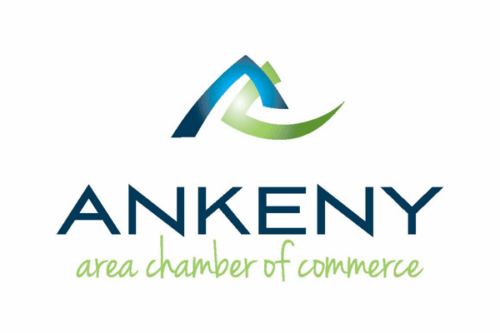Through professional development and training, your workshops provide value to your members, while also boosting your member engagement and retention. So how do you ensure your workshops are consistently satisfying member needs? Workshop feedback surveys are the best way to get objective, quantifiable feedback to create experiences that continue to draw members.
We’ll cover everything you need to know to create a workshop feedback survey, analyze your data, and more. Plus, get access to your essential Workshop Feedback Template.
- What should be included in a feedback survey for workshops?
- Workshop feedback survey template: 12+ questions to Ask Attendees
- Why are workshop feedback surveys important?
- How do you write a workshop evaluation survey?
- How do you encourage participants to fill in a post-workshop questionnaire?
- Creating and sending Your workshop feedback survey
- How to analyze workshop feedback survey data
What should be included in a feedback survey for workshops?
You want your questionnaire to identify what worked and didn’t. Cover areas such as:
- Logistics (venue, worksheets, breaks etc)
- Quality (content, speakers, engagement, inclusion of learning styles)
- General likes and dislikes
It’s also recommended that you include post-event survey questions that address:
- What was valuable?
- What did participants struggle with?
- Was the workshop worth their time?
- Areas of improvement and solutions
The workshop feedback survey questions you include should be linked to your workshop objective and your SMART goals when you created your workshop. Need some ideas on what questions to include? Check out our workshop feedback survey template below.
Workshop Feedback Survey Template: 12+ Questions to Ask Attendees

Ready to start building your questionnaire? Here is your essential template:
1. Rate your overall workshop satisfaction.
Why include this question? This lets you know if you’ve met your target audience’s needs and expectations.
How to format this question? Use a 1-10 rating or Likert scale–a rating scale used to measure opinions, attitudes, and behaviors, typically with 5 answer options such as Very Dissatisfied, Dissatisfied, Neutral, Satisfied, Very Satisfied.
2. Would you recommend this workshop to someone else?
Why include this question? This measures participant satisfaction and organization affinity. Use these answers as social proof to attract attendees to future workshops and events.
How to format this question? Use a text box.
3. How satisfied were you with stage A, B, C, of the workshop?
Why include this question? This pinpoints specific areas to improve.
How to format this question? Use a Likert scale or 1-10 rating.
4. How much value did you feel you got from Speaker A, B, C?
Why include this question? This identifies whether the speakers you chose were the right fit.
How to format this question? Use a Likert scale or 1-10 rating.
5. Additional thoughts about Speaker A? (word box, allow them to fill it in)
Why include this question? This gives more detailed information for the question above.
How to format this question? You’ve probably guessed this already, but you’ll want to use a text box!
6. What would you like to see covered in workshops in the future?
Why include this question? Much like a member needs assessment, this question provides information on how to better-serve your members.
How to format this question? Use a text box.
7. What did you like or dislike about the workshop venue?
Why include this question? This gives you a better understanding of your attendee’s overall experience including accessibility, parking options, size, or even the warmth or draftiness of your venue.
How to format this question? There are several different factors at play here, so use a text box.
Note: If your event was virtual, ask “What did you like or dislike about the virtual platform for the workshop?” to get an idea of your virtual event engagement or how user-friendly your platform is.
8. How useful did you find the worksheets or handouts?
Why include this question? This helps you streamline your workshops while improving your environmental impact.
How to format this question? Use a Likert or 1-10 rating.
9. How satisfied were you with the amount of breaks?
Why include this question? This identifies whether you need more breaks because your attendees were uncomfortable or burnt out.
How to format this question? Up to you! Use a combination that will give you the most useful answers.
10. How comfortable did you feel engaging in the workshop?
Why include this question? This identifies if you’ve met diverse member needs in an equitable and inclusive way.
How to format this question? Use a combination of a Likert scale, 1-10 rating, and a text box.
11. If you did not feel comfortable, what would make you more comfortable?
Why include this question? This pinpoints solutions that meet the unique needs of your members.
How to format this question? Use a text box.
12. Did you feel that the workshop satisfied your learning style/different learning styles?
Why include this question? This identifies how you can communicate information that better appeals to your members.
How to format this question? You can use either a Likert scale, 1-10 rating, a text box or a combination.
13. Did anything surprise you about the workshop?
Why include this question? This identifies new needs and interests in your members that can be addressed in your next event, or even your member benefits.
How to format this question? Use a text box.
14. Any additional thoughts you’d like to share about the workshop?
Why include this question? This final question captures information you may not have addressed in earlier questions.
How to format this question? Use a text box.
These workshop feedback questions are just a starting point for you to customize or use as inspiration to create your own.
Make sure to include at least 1-2 questions per workshop SMART goal. For example: If one of your SMART goals were to improve skill development for your members in Area A, ask questions like:
- How would you rank your skill level in Area A before the workshop?
- How would you rank your skill level in Area A after the workshop?
- Do you feel confident in applying skill level in Area A in your life (professional, personal, or furthering the organization’s mission/interests)?
Why are workshop feedback surveys important?
Post workshop questionnaires give you anonymous, tangible information from your members such as:
- Areas of success – Get information on how your workshop helped you accomplish event or organization goals.
- Issues and roadblocks – Access areas of improvement for strategic and data-driven decisions in future workshops and events.
- Solutions and strategies – Hear about audience pain points and their suggestions for solutions that resonate with them.
Workshop feedback surveys also give you timely information about your members such as:
- Perceptions. Get information about how members perceive your events and your organization. Use this information to improve your overall member experience, including member communications, events, and even your member retention strategy.
- Behavior. According to Harvard Business Review, individuals who don’t participate in 2 surveys per year are 2.6 more likely to leave an organization in the next 6 months. If you don’t get high engagement with your surveys, this presents an opportunity to invest in your member retention and engagement strategies.
- Goals. Surveys act as a regular barometer on whether member goals have changed since you’ve last identified them.
Finally, post-workshop surveys can help change behavior. When you learn from your audience, you can better meet their expectations, show your commitment and alter their point of view and opinion of your organization.
Feedback surveys also communicate:
- That your organization cares about your members. It shows dedication to your member experience by prioritizing member thoughts and ideas.
- Value to your members. It shows a willingness to grow with members, no matter the stage in their life or career (early-mid-late career, different interest levels, or different financial readiness for membership tiers).
Helps draw in new members. It shows your organization is not stagnant and is worth the membership.
How do you write a workshop evaluation survey?
You can also use a combination of:
- Likert scale
- Text boxes
- Multiple choice answers
- Checkboxes
- And more.
Incorporating a Likert scale is most effective because it accurately captures information that individual communication styles may not through a text box.
How do you encourage participants to fill in a post-workshop questionnaire?
Depending on how your workshop went, it may be difficult getting participants to submit feedback. To encourage participation use:
- Incentivization. Try a raffle, membership discounts, or merchandise.
- Anonymity. This encourages responses and increases their accuracy.
Thank you messages. Send a thank you email after participants submit their answers. It’s a small, meaningful gesture that also shows that you’ve received their responses.
Creating and Sending Your Workshop Feedback Survey
Now that you’ve selected what questions to include, here’s how to build and distribute your survey.
1. Find a platform to host your survey
You can use tools like Google Forms or Survey Monkey or streamline your entire survey and workshop process with features in your member management software.
If you have an all-in-one member management software, you’ll have access to customizable feedback forms for events that integrate seamlessly into your membership website, event pages, emails, and more. Plus, get access to insightful data analysis and reports, all in one place.
2. Test mobile compatibility
Most respondents will be accessing your survey via a mobile device, so make sure your questionnaire is mobile-friendly.
3. Send your survey
To maximize reach and engagement, use different distribution channels such as:
- Social media
- Member website
Prioritize the channels your members engage with the most to boost participation and to publicize your results when the time comes.
How to Analyze Workshop Feedback Survey Data
One of the most important steps of your post-event feedback survey is analyzing data. Here’s how to get started:
1. Define Your Goals and Metrics
Refer to your workshop SMART goals and metrics for success to analyze your data, identify successes and areas of improvement, and brainstorm solutions.
2. Use effective tools
An all-in-one member management software makes analyzing feedback easy, allowing you to leverage data reports and analysis with actionable insights for improvement.
The right software will also store your data in a central location for easy reference, removing the time, energy, and financial investment associated with building workshop feedback reports from scratch or finding past data.
If you don’t use member management software, you can use Excel and other apps, and integrate formulas to help visualize your data. However, this can be more time-consuming and costly.
3. Identify trends and patterns
Depending on your workshop frequency, you may want to wait and gather more feedback before jumping to make any changes, so you can see overarching trends.
Add visualizations and use the right data storytelling to communicate your findings to key stakeholders.
4. Identify areas of improvement
To understand where to iterate, ask yourself questions like:
- What are effective ways we can better meet member expectations and goals?
- How can we better manage different learning styles?
- How can we improve areas of success and make them better?
5. Communicate to your members future workshop improvements
Send an email or publicize on other channels such as social media how future workshops will look like based on member responses. Use this opportunity to thank them once again.
Improve Your Member Experience with Workshop Feedback Surveys
Workshop feedback surveys are a high-value tool for organization, bringing value to your members and boosting member renewals through better experiences and engagement. If you’re looking for more ways to retain more members, here are 3 types of surveys that actually boost member retention.
Ready to streamline your workshop processes and feedback surveys? Elevate your member experience in one place with MemberClicks Professional and MemberClicks Trade. Access valuable features such as customizable member portals, data analytics and reports, end-to-end event management, e-commerce, and more.
Recommended Reading
Your Complete Guide to Virtual Events for Associations
30+ Questions to Ask in Your Next Member Needs Assessment
20+ Post-Event Survey Questions to Ask Attendees
10 Membership Renewal Strategies to Increase Your Retention Rate
Event Feedback Survey: 13 Questions for Attendees
33 Online Fundraising Ideas Perfect for Any Cause (Social Distancing Approved!)The Complete Guide to Setting Up a Robust Membership Model
















